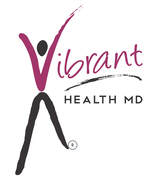Food Sources for Gluten-Free Diet
Staples of the gluten-free diet include:
· Beans
· Cereals made without wheat or barley malt
· Corn
· Fruits and vegetables
· Meat, poultry, and fish (not breaded or made with regular gravies)
· Milk-based items
· Oats (may be okay for some people with celiac disease, but work closely with your doctor or dietitian)
· Potatoes
· Rice
You can eat foods such as pasta, bread, pancakes, and pastries made with alternative grains (rice, buckwheat, tapioca, potato, or corn flours and starches).
You can buy these products through local and national food companies, or you can make them from scratch using alternative flours and grains.
Other food items you may use for cooking include:
· Flax, millet
· Legumes, nuts, seeds, cassava
· Tapioca sorghum
The gluten-free diet involves removing all foods, drinks, and medications made from gluten. This means not eating anything made with barley, rye, and wheat. All items made with all-purpose, white, or wheat flour are prohibited.
Obvious sources of gluten include:
· Breaded foods
· Breads, bagels, croissants, buns
· Cakes, donuts, and pies
· Cereals (most)
· Cold cuts, hot dogs, salami, or sausage
· Crackers and many snacks bought at the store, such as potato chips and tortilla chips
· Gravy
· Pancakes and waffles
· Pasta and pizza
· Soups (most)
· Stuffing
Less obvious foods that must be eliminated include:
· Beer
· Candies (some)
· Communion breads
· Croutons
· Marinades, sauces, soy and teriyaki sauces
· Salad dressings (some)
· Self-basting turkey
There is a risk of cross-contamination. Items that are naturally gluten-free may become contaminated if they are made on the same production line, or moved together in the same place, as foods containing gluten.
Eating at restaurants, work, school, and social gatherings can be challenging. Call ahead and plan. It is important to read labels before buying or eating, due to the widespread use of wheat and barley in foods.
Despite its challenges, maintaining a healthy, balanced diet is possible with education and planning.
Recommendations:
Once you have been diagnosed with celiac disease, it is very important that you talk to a registered dietitian who specializes in celiac disease and the gluten-free diet.
Joining a local support group is also recommended. Support groups can help people with celiac disease share practical advice on ingredients, baking, and ways to cope with this life-altering, lifelong disease.
Your doctor might prescribe a multivitamin and mineral or individual nutrient supplement to correct or prevent a deficiency.
References:
Green PH, Cellier C. Celiac disease. N Engl J Med . 2007;357:1731-1743.
Kagnoff MF. AGA Institute medical position statement on the diagnosis and management of celiac disease. Gastroenterology . 2006;131(6):1977-1980.
Semrad CE. Approach to the patient with diarrhea and malabsorption. In: Goldman L, Schafer AI, eds. Cecil Medicine . 24th ed. Philadelphia, Pa: Saunders
lsevier; 2011:chap 142.
· Beans
· Cereals made without wheat or barley malt
· Corn
· Fruits and vegetables
· Meat, poultry, and fish (not breaded or made with regular gravies)
· Milk-based items
· Oats (may be okay for some people with celiac disease, but work closely with your doctor or dietitian)
· Potatoes
· Rice
You can eat foods such as pasta, bread, pancakes, and pastries made with alternative grains (rice, buckwheat, tapioca, potato, or corn flours and starches).
You can buy these products through local and national food companies, or you can make them from scratch using alternative flours and grains.
Other food items you may use for cooking include:
· Flax, millet
· Legumes, nuts, seeds, cassava
· Tapioca sorghum
The gluten-free diet involves removing all foods, drinks, and medications made from gluten. This means not eating anything made with barley, rye, and wheat. All items made with all-purpose, white, or wheat flour are prohibited.
Obvious sources of gluten include:
· Breaded foods
· Breads, bagels, croissants, buns
· Cakes, donuts, and pies
· Cereals (most)
· Cold cuts, hot dogs, salami, or sausage
· Crackers and many snacks bought at the store, such as potato chips and tortilla chips
· Gravy
· Pancakes and waffles
· Pasta and pizza
· Soups (most)
· Stuffing
Less obvious foods that must be eliminated include:
· Beer
· Candies (some)
· Communion breads
· Croutons
· Marinades, sauces, soy and teriyaki sauces
· Salad dressings (some)
· Self-basting turkey
There is a risk of cross-contamination. Items that are naturally gluten-free may become contaminated if they are made on the same production line, or moved together in the same place, as foods containing gluten.
Eating at restaurants, work, school, and social gatherings can be challenging. Call ahead and plan. It is important to read labels before buying or eating, due to the widespread use of wheat and barley in foods.
Despite its challenges, maintaining a healthy, balanced diet is possible with education and planning.
Recommendations:
Once you have been diagnosed with celiac disease, it is very important that you talk to a registered dietitian who specializes in celiac disease and the gluten-free diet.
Joining a local support group is also recommended. Support groups can help people with celiac disease share practical advice on ingredients, baking, and ways to cope with this life-altering, lifelong disease.
Your doctor might prescribe a multivitamin and mineral or individual nutrient supplement to correct or prevent a deficiency.
References:
Green PH, Cellier C. Celiac disease. N Engl J Med . 2007;357:1731-1743.
Kagnoff MF. AGA Institute medical position statement on the diagnosis and management of celiac disease. Gastroenterology . 2006;131(6):1977-1980.
Semrad CE. Approach to the patient with diarrhea and malabsorption. In: Goldman L, Schafer AI, eds. Cecil Medicine . 24th ed. Philadelphia, Pa: Saunders
lsevier; 2011:chap 142.

